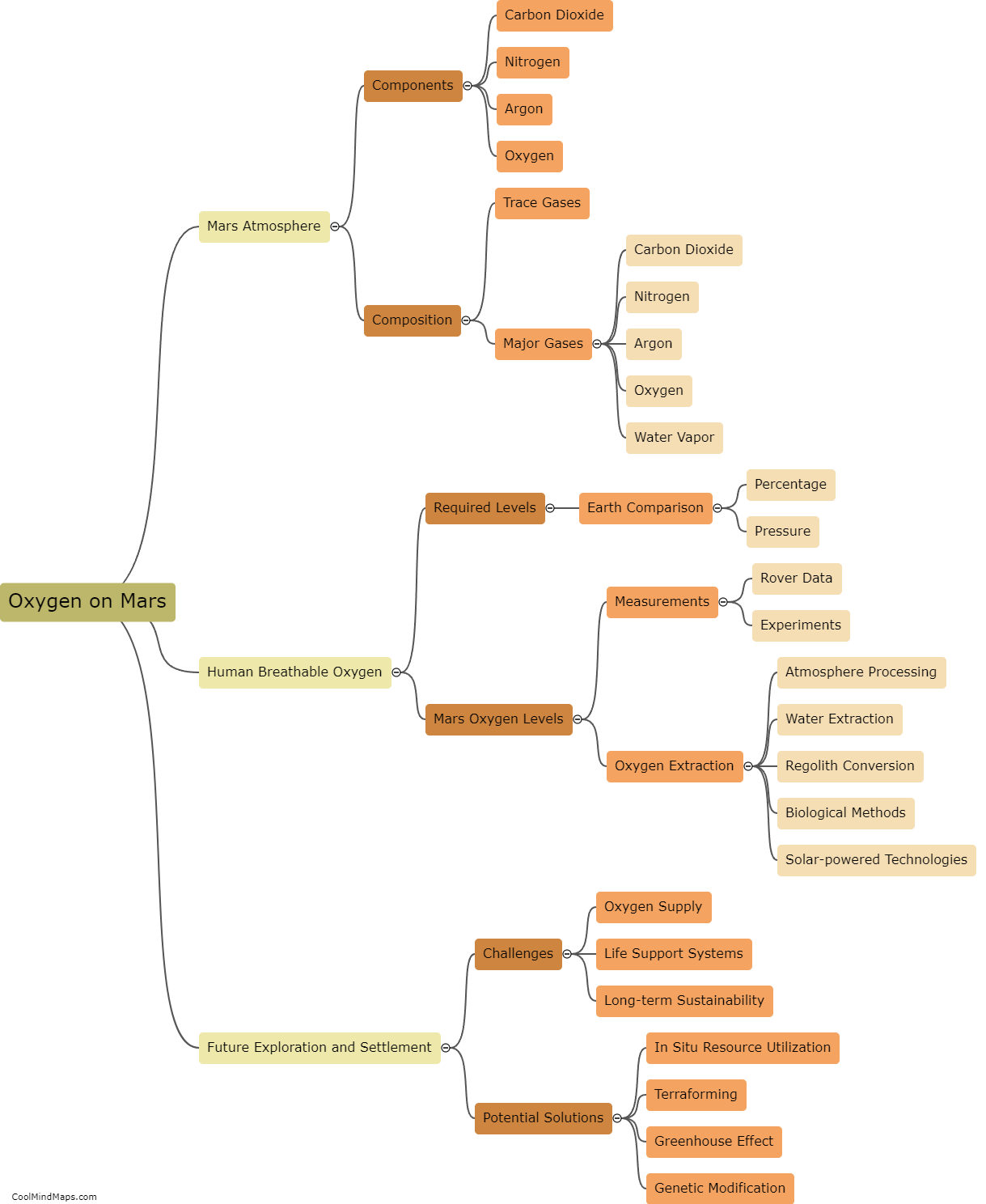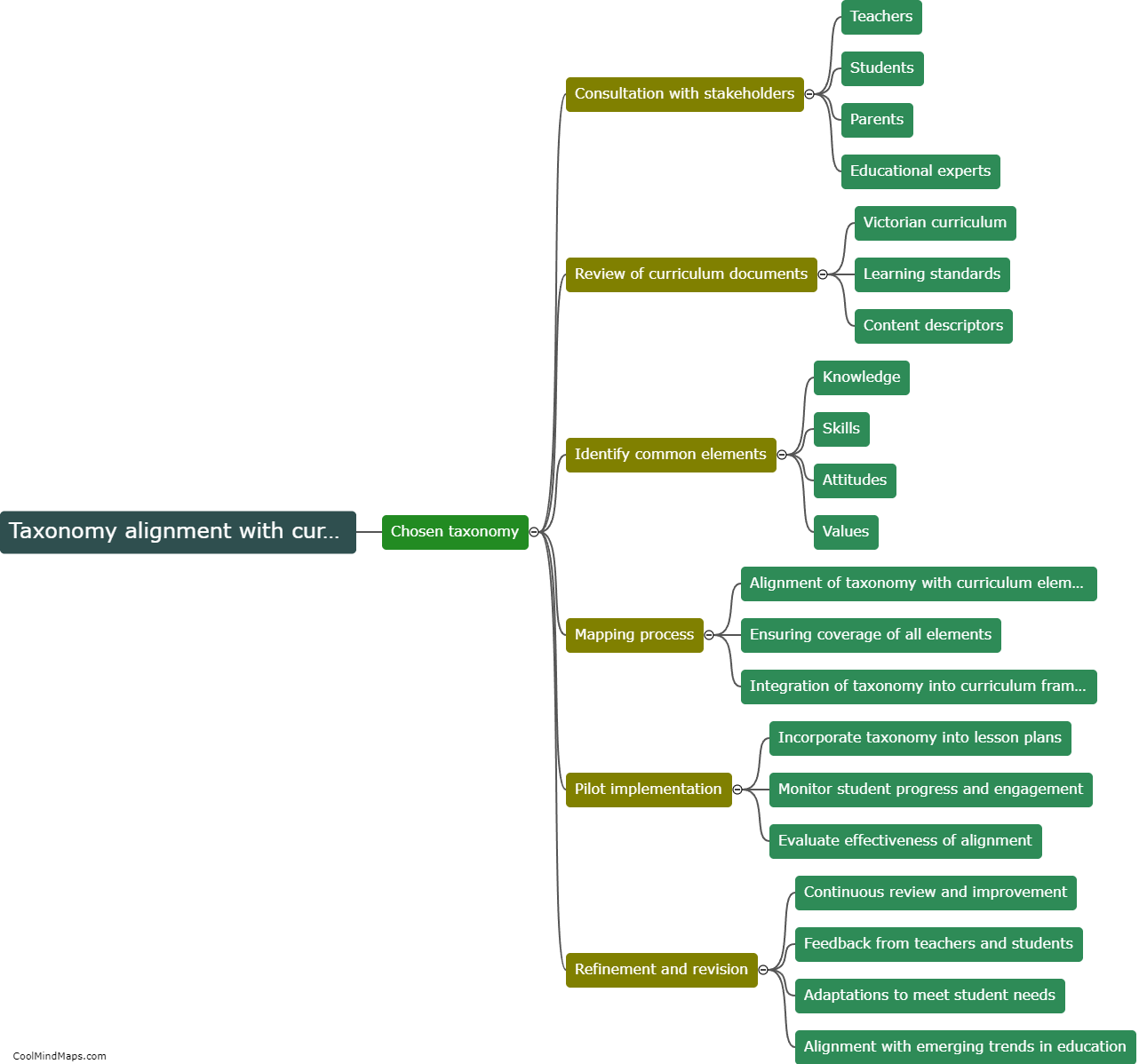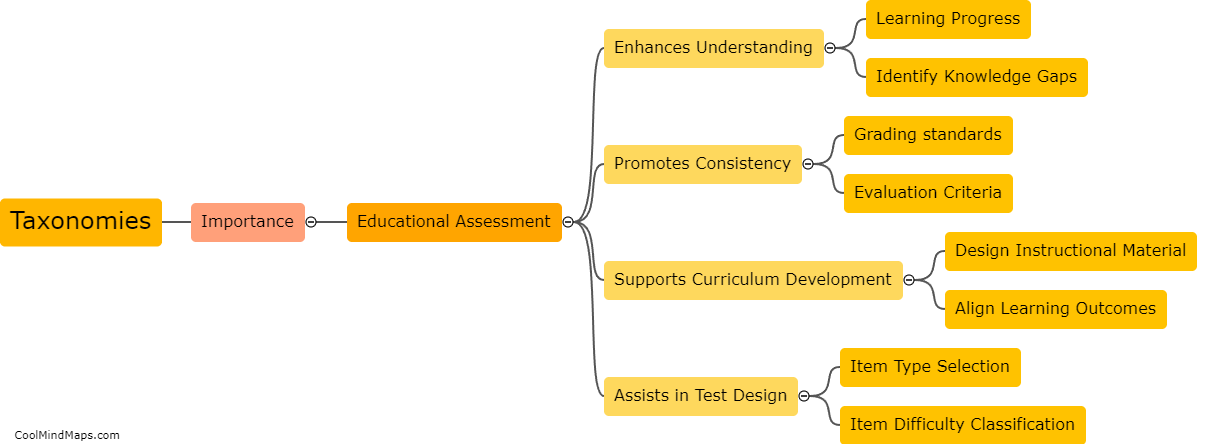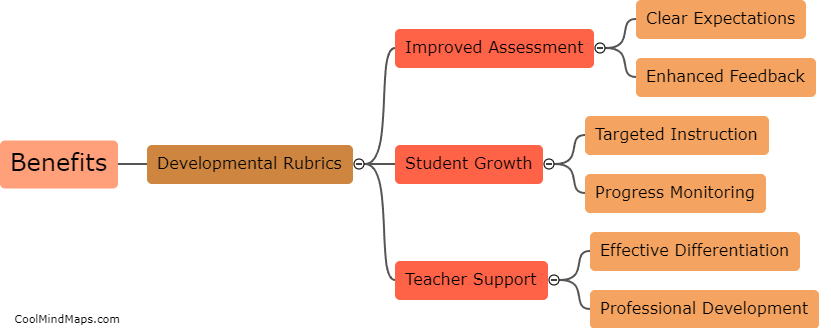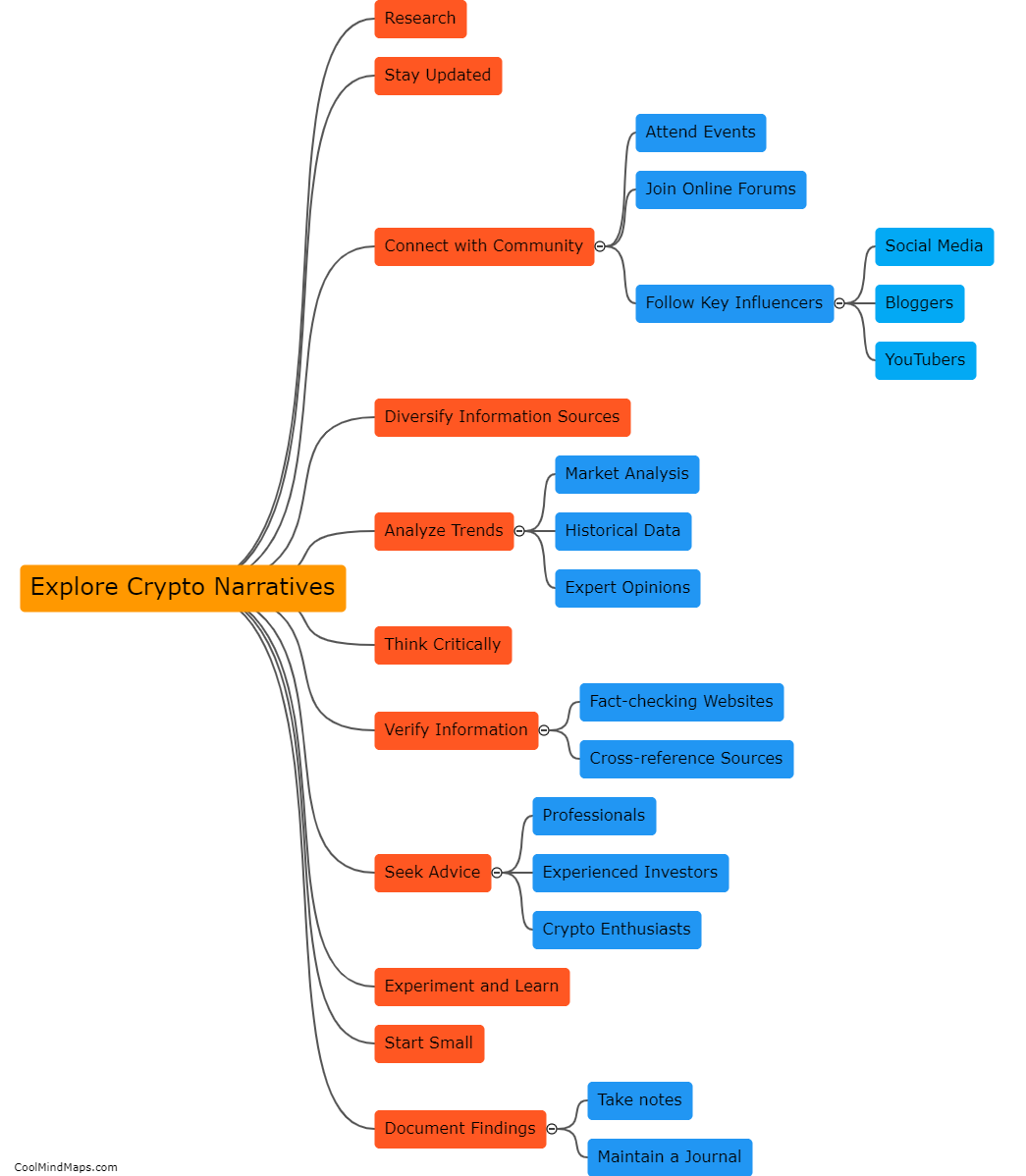What are the taxonomies available for developmental rubrics?
Taxonomies available for developmental rubrics refer to the various frameworks or systems used to categorize and organize the different levels or stages of development in a specific area or skill. These taxonomies provide a structured and systematic way to assess and measure a person's growth or progress over time. Some common taxonomies used in developmental rubrics include Bloom's taxonomy, which focuses on cognitive skills, and Webb's depth of knowledge framework, which measures the complexity of tasks and thinking required. These taxonomies help educators and evaluators create rubrics that effectively capture and evaluate the progression of skills or knowledge in a developmental manner.

This mind map was published on 16 August 2023 and has been viewed 98 times.


